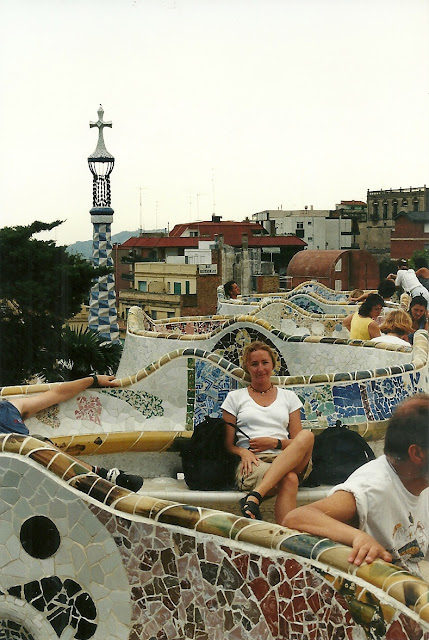Once again, we caught our two buses into the train station and then caught the Metro to Colesseo to go and see, as you could guess, the Colosseum. What I did not expect was to see it as I stepped out of the station right in front of us. Our first viewing though was of scaffolding and once again my heart sunk. Fortunately, it only covered a small section outside. Phew! We did a lap around the outside as the queue to get in was the longest we’d seen anywhere. By the time we got back around it had started to rain and the queue had disappeared and we walked straight in. The rain continued as we walked around the ground level of this 2000-year-old stadium, which had also been used as both a fortress and a quarry. We climbed the steep stairs to get to the next level and while doing so it started to pour. A thunderstorm had come over Rome and you could barely see across the street. We stayed in the refuge of the stairwell for 20 minutes until the rain stopped. The view over the Colosseum from the next level gave it a better perspective. It was possible to fit 80,000 people in this building, and with the original floor gone, you could see into the maze of animal cages and storage rooms below. I’d love to be able to picture / see it in its original condition.

Me, Colosseum, Rome, Italy
Colosseum, Rome, Italy
Me, Colosseum, Rome, Italy
Across the road from the Colosseum is the Arch of Constantine, built in 312 AD, to commemorate Constantine’s victory over his rival, Maxentius.
Arch of Constantine, Rome, Italy
Across from this is the 26 square kilometer area of the Roman Ruins. This is an area of Rome dating back 2100 years which has been continually excavated since the 1800’s. After the Roman Empire’s importance declined in the 4th century, this area of temples, buildings, and monuments fell into ruin and until excavations began, was used as pasture land. Some of the more significant monuments here include Tempio di Antonio & Faustina – an eighth century church (still in good condition) built as a senate building 1000 years previous. Tempio di Saturno – of which eight granite columns remain of this most important temple. Also here is the Temple of the God Julius, which was built by Augustus in memory to Julius Caesar. Even today the shrine is covered in flowers and messages for the once great ruler of Rome. There are so many other monuments here that it would take a month of Sundays to record them all. Roberta and I took the easy way, she bought a book about the Forum, while I purchased one on Rome.

Temple of Antonius & Faustina, Roman Forum, Rome, Italy
Roman Forum, Rome, Italy
Basilica of Maxentius, Roman Forum, Rome, Italy
Me, Roman Forum, Rome, Italy
After spending a few hours here (and nearly two rolls of film) we walked up the hill to Piazza del Campidoglio, where currently the local government has its offices. It is flanked by Musei Capitolini, which houses many Roman artworks and sculptures including the remains of the statue of Constantine, once a huge statue which had been excavated in the Roman Ruins area. The museum also has a statue of Emperor Marcus Aurelius – of which a replica sits in the middle of the plaza. This bought an end to our huge day of sightseeing.
Me & Marforio, Palazzo dei Conservatori, Rome, Italy
Palazzo Centorio, & Marcus Aurelius, Rome, Italy
On the way home we stopped at a trattoria for our splurgy Italian dinner (prosciutto, spaghetti, veal and gelati). We got home around 10.30pm and crashed for the night.





%20-%20Rome,%20Italy.jpg)





























%20-%20Parque%20del%20Buen%20Retiro%20-%20Madrid,%20Spain.jpg)










